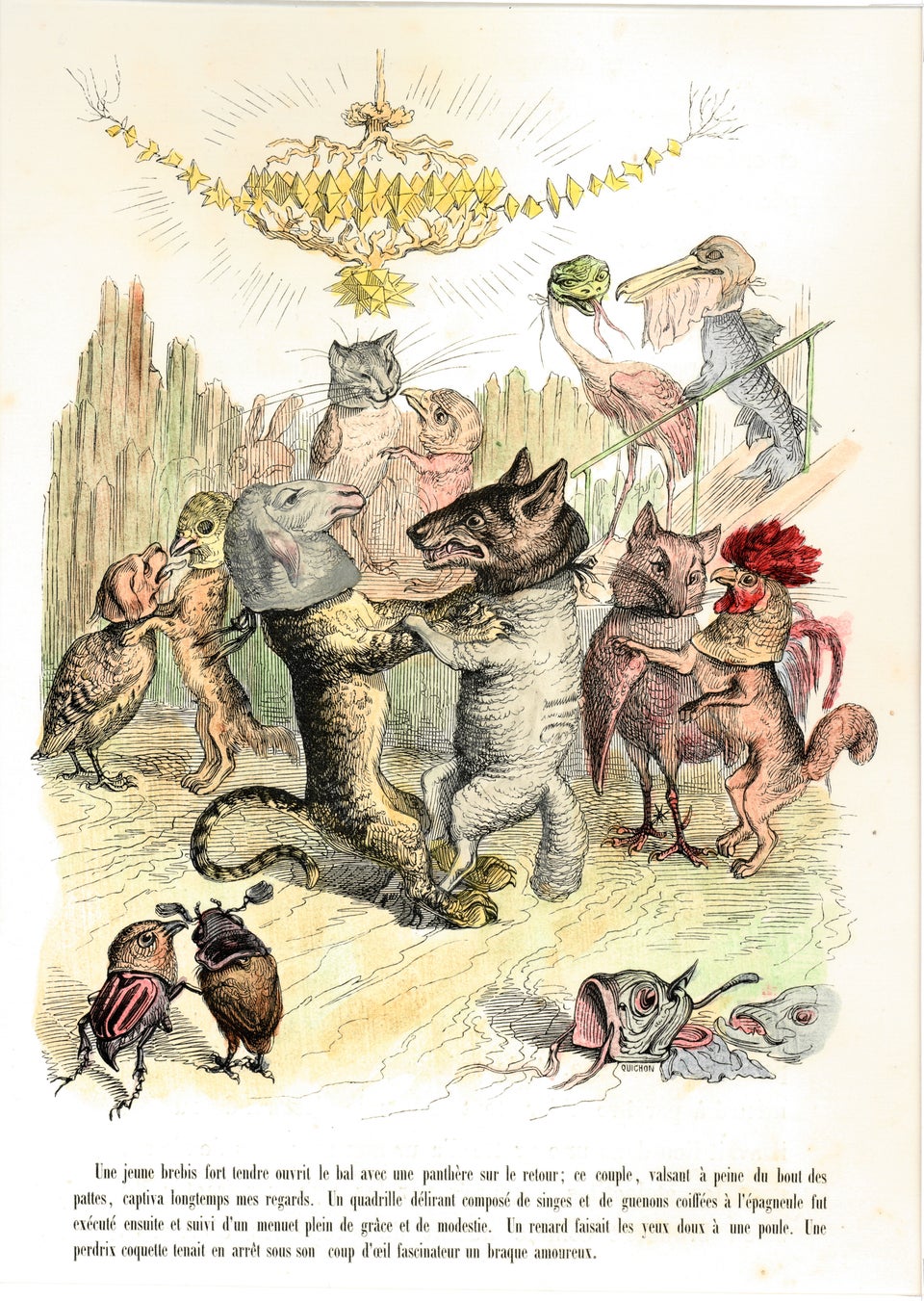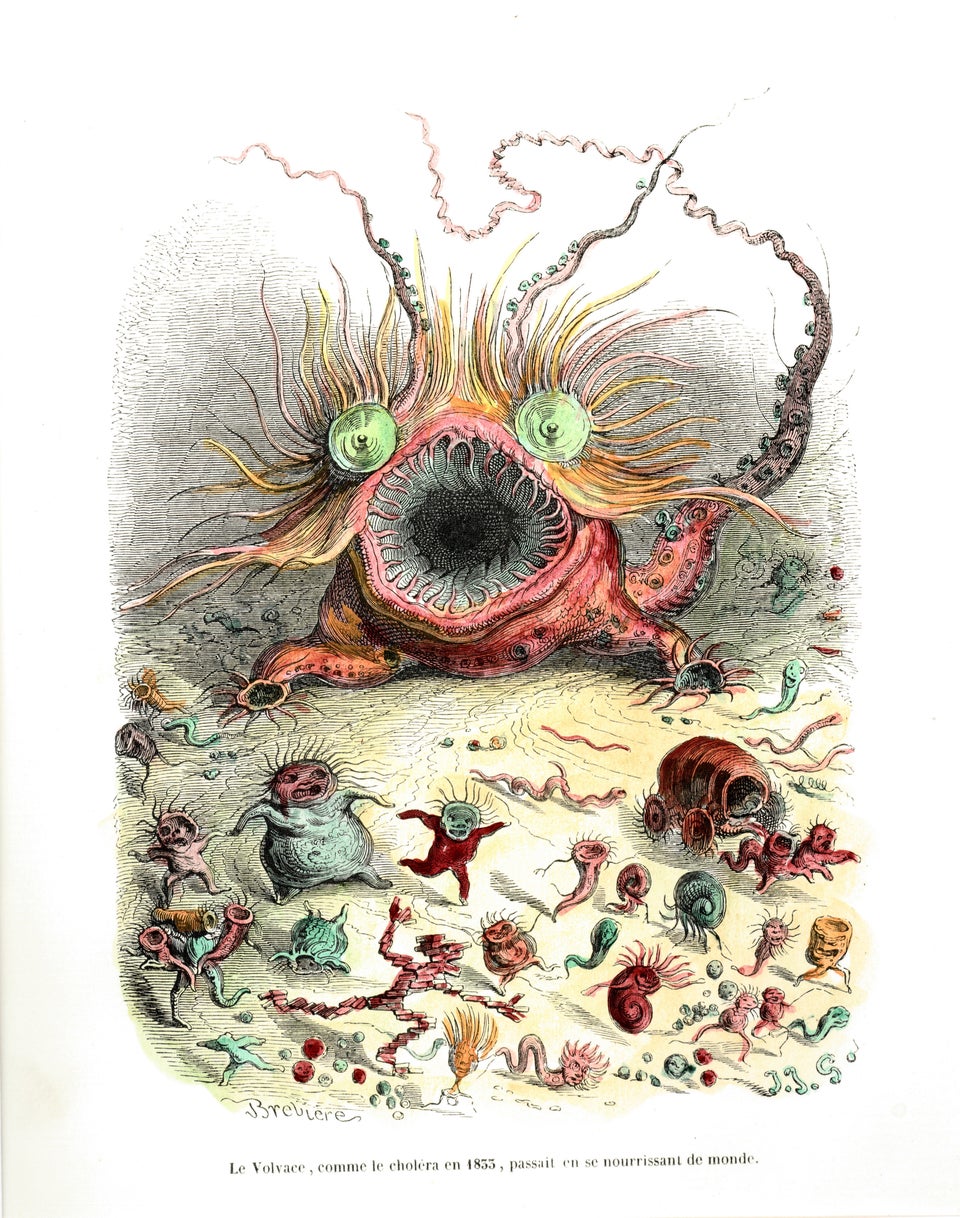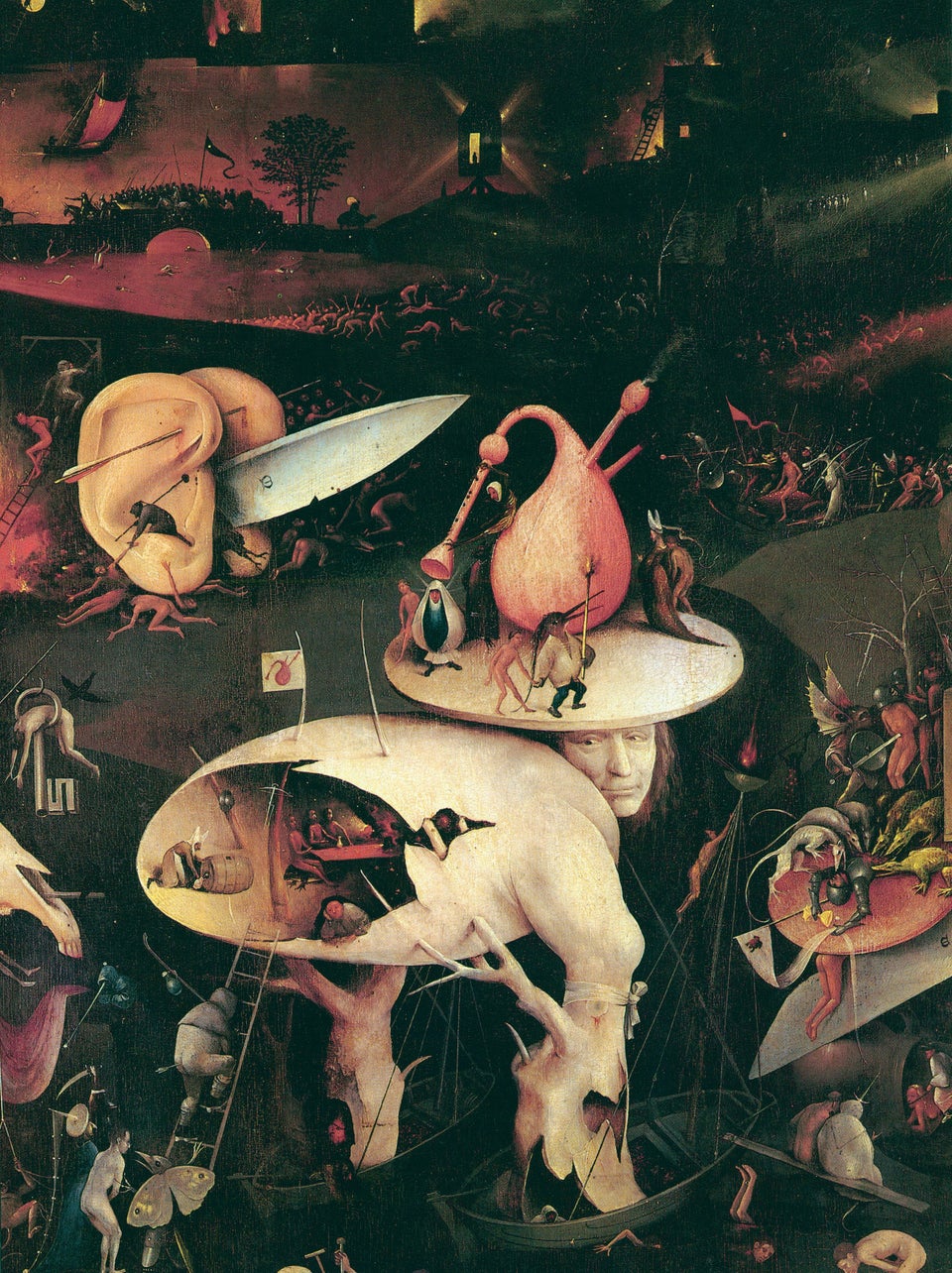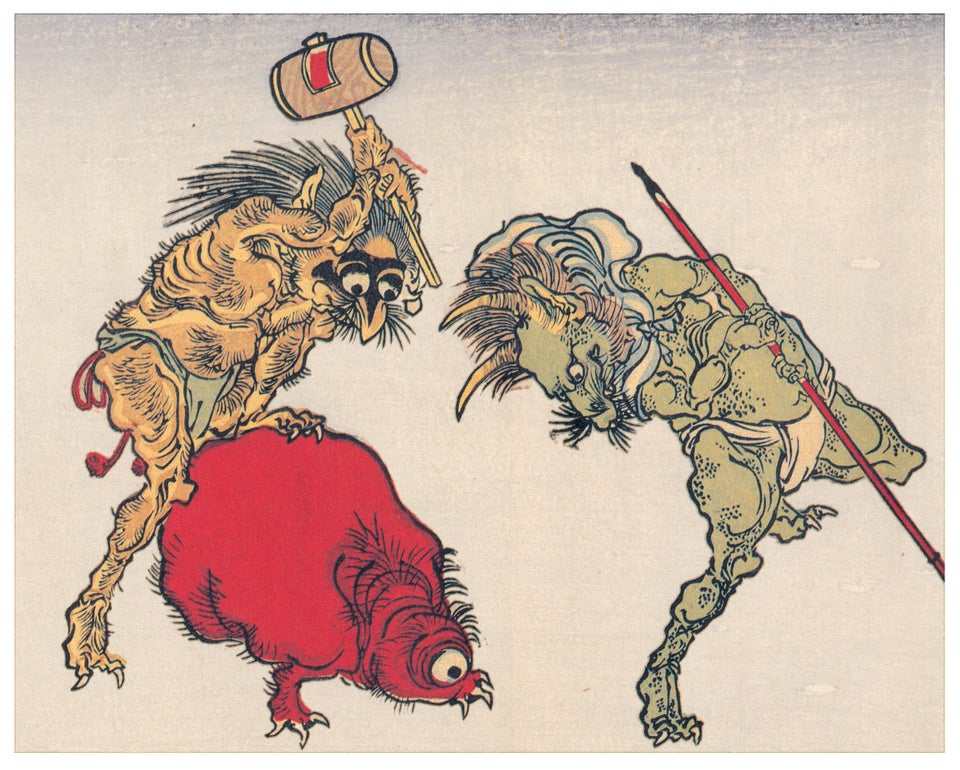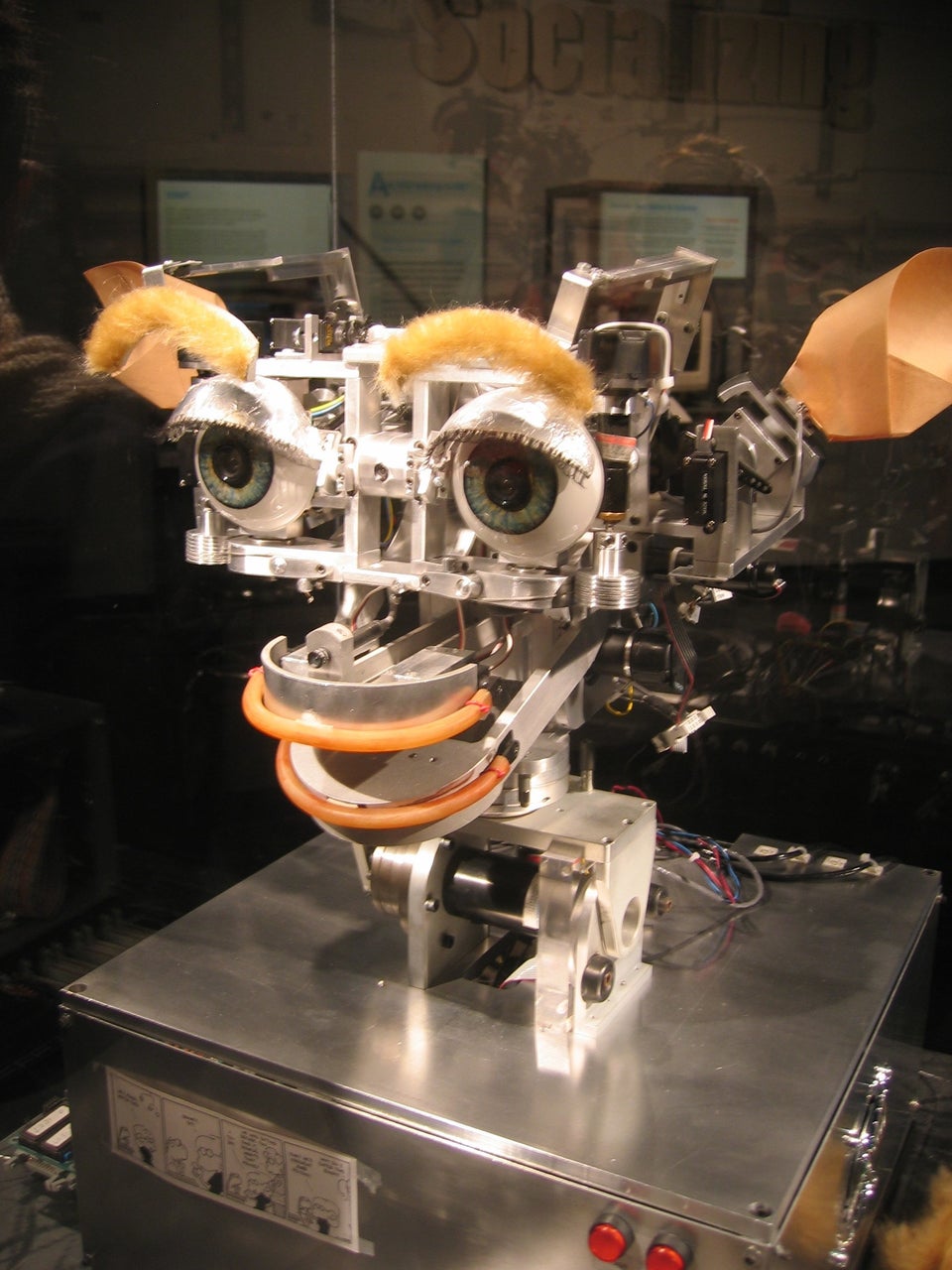The most fantastic monster in all of Western history just might be the demon in the center of Hell, from Hieronymus Bosch's triptych "The Garden of Earthly Delights," painted around the start of the sixteenth century. It has a human face with an inscrutable expression; its torso is a broken egg, which seems to be growing from branches of dead, hollow trees. On its head is a hat topped with an enormous bagpipe. The flames around it are those of the early iron mills. Many figures in the painting seem to move to jerky, mechanical rhythms, such as those marching around the brim of the demon's cap. Precisely the lack of an unambiguous interpretation has helped make the picture an icon of the diffuse, half-articulate fears that would pervade the emerging industrial age.
Just about two centuries earlier, Dante, in Inferno, had described a profoundly different Hell. The inscription above the gate contains the words, "I (Hell) was created by divine power, by the highest wisdom and the greatest love." Evidence of this is the extreme order that prevails in the underworld. It is neatly divided into nine levels, in which each person is placed in the location that corresponds exactly to the nature and severity of his sin. By contrast, the Hell of Bosch is a state of chaos, a disintegration not only of order and justice but also of all the categories with which we habitually try to make sense of the world. There is little distinction left between nature and artifice, people and animals, or animals and plants. There may, in fact, not even be much difference between eternal punishment and everyday life. Most of the sinners appear, from the expressions on their faces, hardly aware that they are being tormented, as they go about their assigned tasks. In this abyss, even the Devil himself no longer seems to exercise much authority.
One might say, then, that Bosch's Hell is an implosion of Dante's. Humanistic traditions generally attempt, whether through science or theology, to impose a very intricate order on experience. They rely on elaborate classifications, and regard incorporeal features such as "reason," "sentience," or "the soul" as predominantly a human birthright. But the very complexity of this order means that it is constantly threatened with collapse, and the industrial era has always been accompanied by an undertone of nihilism. There is also a substratum of animism ─ what the Victorian critic John Ruskin called the "pathetic fallacy" ─ that periodically emerges in many contexts from lyric poetry to philosophy.
The human imagination is continually active and so vivid that imagined beings constantly threaten to overwhelm our sense of reality. Fantastic creatures are found in art of all times and places, but people in some cultures feel more threatened by them. The Occident has been generally less visually inventive than ancient Egypt, China, India, and Mesoamerica. In the Abrahamic religions, the depiction of fantastic animals has been inhibited by the Biblical injunction against representational art, enforced with varying degrees of strictness in different forms of Judaism, Christianity and Islam. In Greco-Roman traditions, the representation of imaginary animals became standardized, preventing a constant propagation of novelties. Traditions far older than even the Biblical Book of Revelations make the proliferation of strange beasts a sign that we are approaching the end of time.
But a few artists, scattered throughout the centuries, have lifted almost all of the restraints on their imaginations and created a mélange of amazing beasts, blending human features with those of animals, plants, and objects. One of the first is the mysterious "Master of Zarko" on the island of Crete in the seventh century BCE, who carved fantastic images on gems and just might be, though his name and story are unknown, one of the most influential artists that ever lived. In the last couple of centuries, artists of the phantasmagoric include J. J. Grandville in France, Kawanabe Kyōsai in Japan, and Dr. Seuss in America. When they give a tangible form to that primeval chaos, it often seems less threatening and more humorous than we might initially have expected.
Today, the growth of sophisticated electronic devices and of biotechnology is leading us into a phantasmagoric world. Many stories, such as the Jewish legends of the Golem in medieval Krakow and Mary Shelley's Frankenstein, have warned that human beings could be challenged, and perhaps even replaced, by their creations. In dystopian science fiction, a recurring trope is the sentient computer such as Hal in Stanley Kubrick's movie 2001: A Space Odyssey. Robots now conduct telephone interviews and navigate through traffic in Manhattan. Human genetic material is inserted into pigs, to produce organs suitable for transplant into men and women. Children grow up caring for robotic pets such as tamagotchis. But, while challenging human uniqueness, power, and autonomy, these developments do not impinge on the poetic mystery at the core of humankind. The heroes of old fairy tales and epics do not seem less "human" for wandering among creatures that, at times, show far greater wisdom and power than their own.
Boria Sax is the author of Imaginary Animals: The Monstrous, the Wondrous and the Human [Reaktion Books, $30.00].
